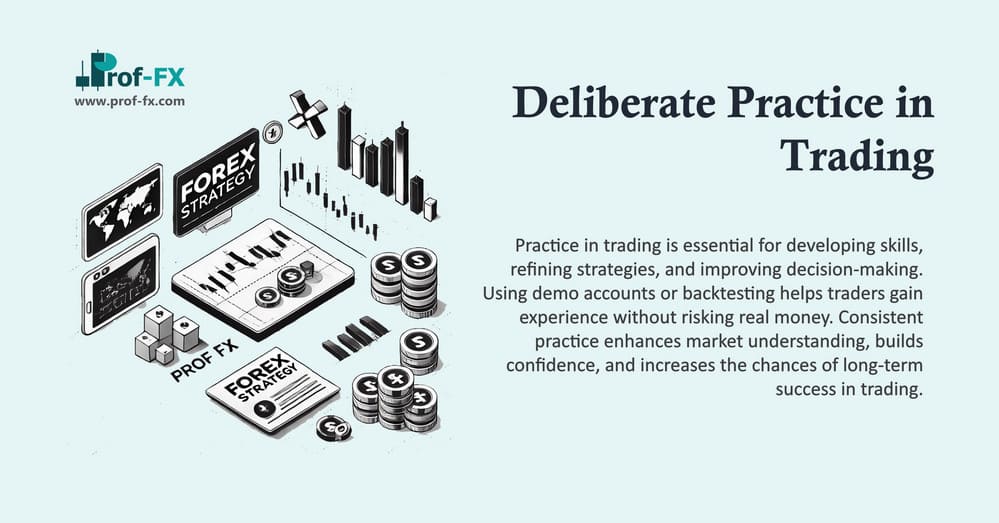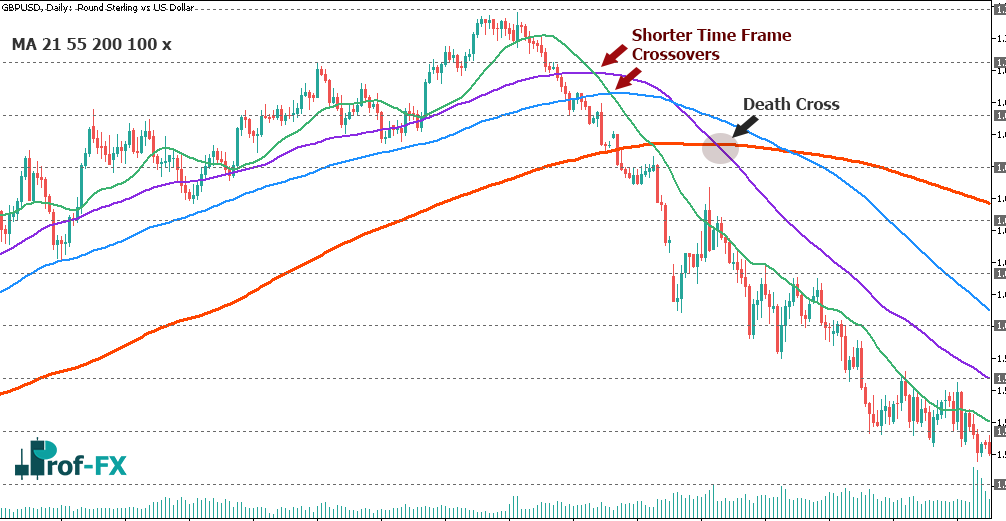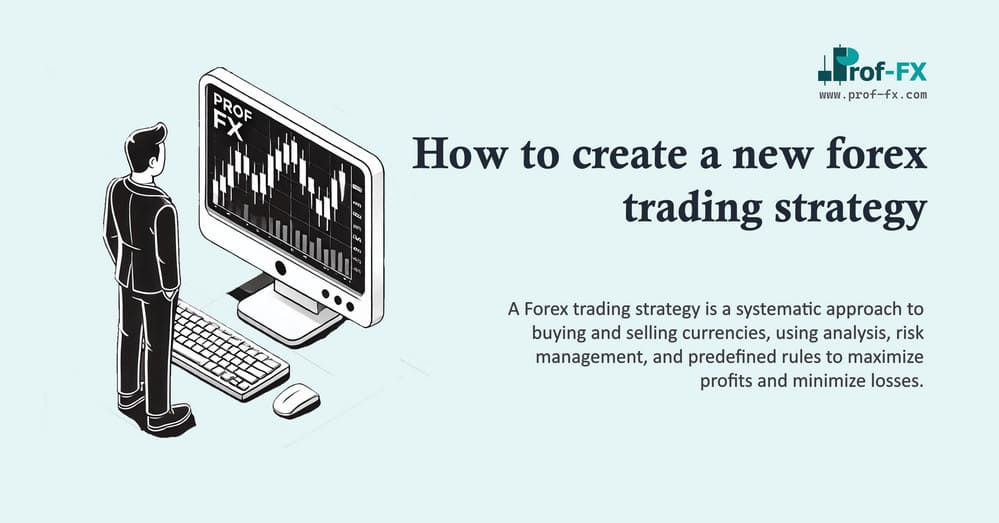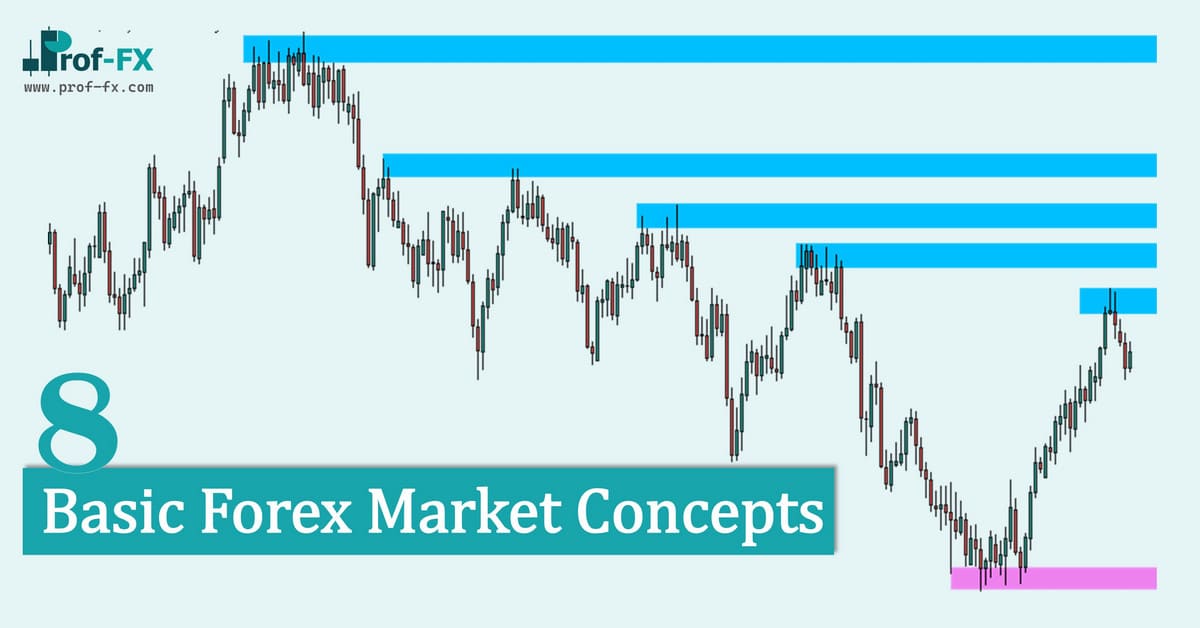“You just need more chart time“.
I hear this advice all the time. My take on this? Yes and no.
Yes in the sense that as a beginning trader, you do need to develop a feel for the market you’re trading. Without any time in front of the charts, you will never understand the natural rhythm of a market, patterns, the influence economic news has on the price, how support and resistance are used, etc. In other words: chart time is a way to develop a gut feeling about how the market operates.
No in the sense that beyond the experience developed by initially observing charts, staring at charts without a purpose won’t increase your knowledge level and more importantly, won’t necessarily improve your bottom line.
“You need 10.000 hours of practice to be great at anything“.
It’s also why I don’t buy the 10.000-hour rule that gets thrown around everywhere. A trader with focus and a will to improve can achieve much more in 2.000 hours than a trader who is stubborn and doing the same thing over and over again for 10.000 hours. But still, Dilbert is pretty funny.
Blind Practice
Learning only by doing doesn’t work. It’s what many call blind practice: doing the same thing over and over again and expecting different results. Mindlessly scrolling through charts, looking for a setup. You can compare it to a musician who plays the same tune over and over again. It’s obvious that this won’t make him/her a top musician. A trader staring at charts is the trading equivalent of that musician.
Instead, traders need a different kind of practice: learning by focussing on specific elements of a skill you want to learn or improve, and working on those elements until it has become second nature and part of your routine. You do this using drills and exercises that focus on acquiring that skill in increments until it doesn’t require any thought anymore.
Amateur musicians tend to spend their practice time playing music, whereas pros tend to work through tedious exercises or focus on difficult parts of pieces.
Joshua Foer
This is often called deliberate practice. It speeds up your learning process immensely and here’s how you do it.
Guide to Deliberate Practice In Trading
Before anything else, know that improving a skill is often frustrating. You will run into barriers due to things that don’t yet work as expected or you might encounter concepts you don’t yet understand. This is normal. The discomfort you experience is exactly what is inherent to learning a new skill. It means you’re doing it right. Embrace it and you will find it easier to improve.
1. Define Targets
The first step in your practice as a trader should be defining what your target will be. What do you want to learn or improve on? Let yourself be guided by the data from your trading journal. Zoom in on things in your trading journal you need to improve. After tracking your trades for a while, it should become apparent what can bring you the most benefits.
Here are some examples to get you started:
- You have issues pulling the trigger on perfectly good trades
- Increasing your position size always seems to result in losing more
- You keep listening to other people’s opinion for trades instead doing your own analysis
- When you’re in a winning trade, you cut your winners because you’re scared to give back your gains
- When you’re in a losing trade, you can’t bring yourself to cut losses in the hopes they will return in your direction
- You always seem to enter too soon
- You randomly take trades without a clearly defined reason why
- While you know what to do, you can’t seem to find the discipline to do it
- You get scared whenever the market retraces a bit, before continuing in your direction
You get the idea. Whatever it is, write it down on a piece of paper, this will allow you to keep focused during your practice sessions. Believe that you will be able to do it, as this is a key step in succeeding what you set out to do.
2. Deconstruct The Skill
Now comes step two: deconstruct the skill you have set as your target. This is where a technique like the 5 whys can be helpful. If you’re doing something wrong, WHAT exactly makes you cause this behaviour? Do you leave losing trades open because you think they will turn around? Because you’re uncertain about your trading system? Why are you not able to put on a trade if your system shows you it’s a valid trade? Maybe you’re fearful of losing money?
This shouldn’t only be related to trade execution, too. It could just as well be process-related: maybe you don’t have the necessary routines in place to be prepared for the upcoming trading week. What’s important is to try and come to the smallest incremental skill you could acquire in order to help yourself reach the target.
Example: cutting losers
Let’s say that you have trouble cutting losers. You well know that you should do it, it says so in your trading plan. But still, every time the moment comes, you feel such an encompassing emotion that pretty much paralyses you. One the one hand, you feel hopeful that the trade will turn around and on the other hand, you can’t bear the idea of actually materialising this loss by cutting the trade.
A first incremental step could be to every time you’re in this situation, cut the trade by half. This way, you get accustomed to the feeling of cutting a trade while still having a position in the market, which makes it easier. Once you are comfortable with cutting trades by half, the step to cut the trade in its entirety isn’t too far away. Find ways to defend the improvement to yourself:
- I can always get back in once the price moves in my way again
- I will take this small loss now, but I avoided a potentially bigger loss in the future
You’ll need time to incorporate this into your trading routine, to condition your brain to make the right decision over and over again, with minimal effort. Something that often helps is to develop a well-defined “if-then” flow into your decision-making process:
- IF I get two candles against me for more than 50% of my stop loss,
- THEN I will cut the trade by half
Because you’re focussing on just one aspect of your trading approach, the task at hand becomes much more manageable.
3. Shorten The Feedback Loop
Step three is all about practice. If you have difficulty cutting trades, get to backtesting! Backtesting is beneficial for many reasons, but in the context of deliberate practice, the main benefit is that it shortens the feedback loop. It allows you to see how some change is performing, while you are practising.
Traders often know what to do, but fail to actually do it when the moment comes. This is in part because the feedback loop takes too long: the moment you experience the effect of a certain action is often too far apart from the cause. Shortening that feedback loop allows a trader to see the immediate benefit of changes in their actions.
In this step, it’s important to learn often, in short blocks of time. Keeping your practice sessions short will avoid mental exhaustion and information is better retained if it is repeated often. Because of this, it’s often better to practice half an hour every night than doing 5 hours in the weekend (the combination is of course even better!).
During practice, make a lot of mistakes. Be aware of them and keep track of what works and what doesn’t. Review your practice sessions to see if patterns start to emerge that could improve your trading performance.
4. Tips To Make Deliberate Practice Work
1. Make recordings
To many, this might seem overkill. But especially in trading, emotions play a big part in our decision-making process and while you are in a trade, it might be harder to make objective decisions. By making a recording (either audio, video or screen capture), you can do a “post-gameplay recap”.
This is a technique used by professional football players to observe how they were performing. It highlights issues that might not be apparent while you were trading, but are obvious afterwards. Doing this will increase your awareness of potential issues and very likely, you’ll remember the recording next time you’re in a trade.
2. Keep track of your goals
Use a todo service like Wunderlist to keep track of the improvements you want to drill down on. The feeling to check off an item if you completed it, will give you extra motivation to continue and improve. Incorporate these goals into your trader development plan.
3. Practice at the edge of your comfort zone
The biggest improvements are happening when you’re just at the edge your comfort zone. You’re learning new things that are unfamiliar, but not in a way that they scare you or cause you to give up on an unreachable target. If you can get that sweet spot of learning, you’ll see the most improvement.
4. Journal
Trading journal reviewBy now, you should all be very familiar with a trading journal. It’s a way to keep track of your trading data, but also a way to process your trading decisions and add additional comments on why you did what you did. These two benefits often result in the trading journal as a real life-changer in a trader’s process to consistency. So why not extend that to using a journal for your deliberate practice as well?
Journal what you do, what you have accomplished (both good and bad) and what still needs work. Writing your thoughts down will help process them, which in turn will lead to learning the specific skill faster.
5. Further Reading
Deliberate practice is something that will be different for every trader, as every trader will have their unique set of improvements to work on. With the above steps, you should have a guide on how to get started with it and improve your trading game.
If you want to know more about deliberate practice and acquiring new or improving existing skills, I recommend that you check out these three books:
- The First Twenty Hours. How To Learn Anything… Fast! by Josh Kaufman
- The Talent Code by Daniel Coyle
- Peak by Anders Ericsson











